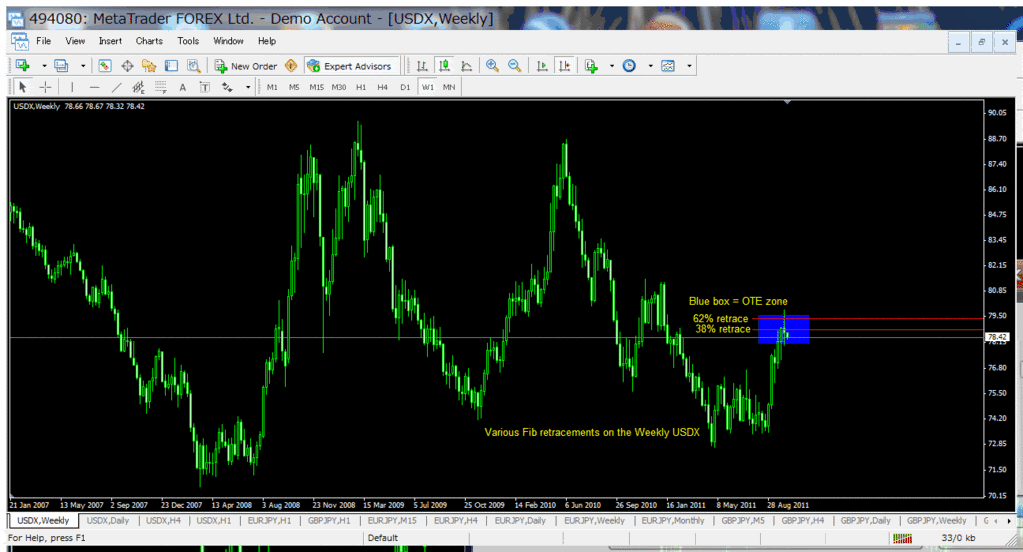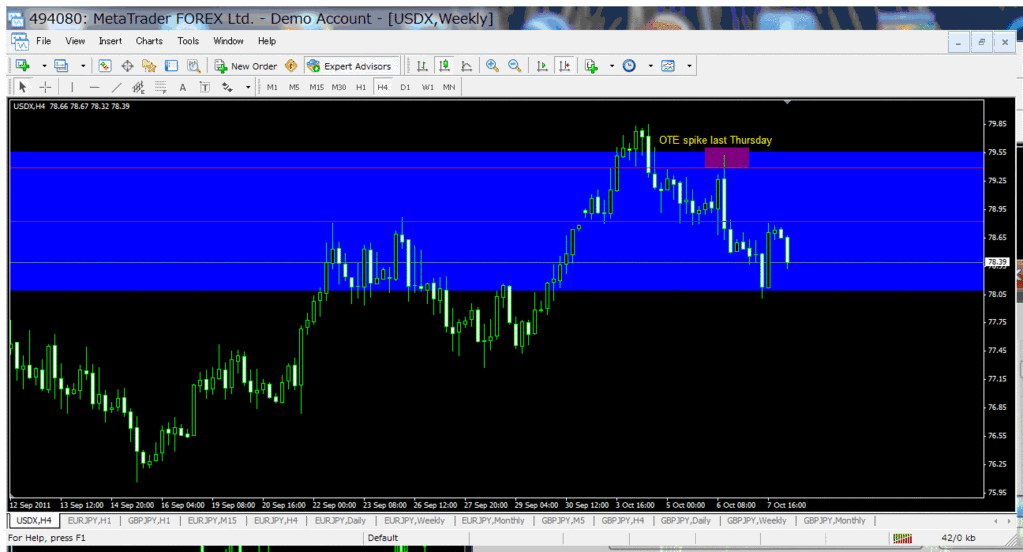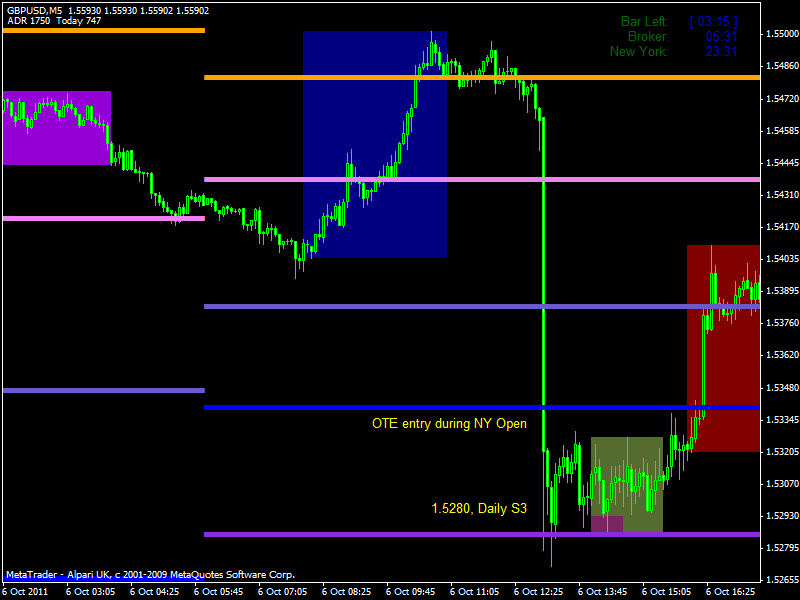You correctly draw parallels between the last few weeks of COT data and that of May last year, when the GBP/USD subsequently set off on a big rally. I think I am right in saying that when the Commercials build a large long position on a commodity it is generally an indication that it is a good time to buy; and this would suggest that they anticipate another long strong rally on the GBP/USD. There seems to be a good correlation between COT and the pair at these high time frames.
Correct. But I would caution against assuming that a ‘long strong rally’ will ensue.
I am a bit less clear about why one would do Fib analysis on the USDX, though. I understand that it is actually tradable, but it is surely driven more by the real exchange rates between the USD and its basket of currencies than it is by pure trading? OK, I know that Fibs are used in trading precisely because they have a recursive nature, and presumably if Fibs work on all the relevant USD pairs, they will work on the USDX, too; it is a derivative of them. Still, it seems one of the less convincing hypotheses, to me.
I’ll leave this one for ICT to answer in detail. He has used it in his protrader club videos and I have incorporated it successfully with my Top Down Analysis. I am presuming that if you are trading Cable, the USDX will be highlighting that there is also Fib resistance/support on, most notably, the Euro, but also on the other pairs. I would say that most financial professionals are watching the index and analyzing it, and in that respect it adds more weight than just looking at how Cable sizes up to Fiber.
I follow the reasoning about stops being placed below 1.5300, too. But would we really anticipate that the banks would aggressively drive the price down nearly 200 pips in a minute or so, purely on the evidence of COT, USDX, and the recent dealing range? Maybe, but I would be really sceptical if someone popped up and said that they had been all set up for it!
I agree that 200 pips is a lot to drive price down, but if you can accept that Turtle Soup patterns set up on M15 time frames with 30 or 40 pip swings, I don’t think it is unreasonable to suggest that the same patterns could also set up on the Weekly chart with 200 pip swings.
A simple reaction to fundamentals therefore seems to explain all these phenomena happening in one minute better than a planned assault on GBP/USD.
Are the two mutually exclusive?
Anyway, it is very interesting to discuss these matters. Are you taking a long position on the cable, with a TP set around the 1.7000 mark, and hoping for a merry Christmas?
I have learned through past mistakes never to look that far ahead! COT has been known to set up rallies that exceed well over 1000 pips, but also as little as 200. Will the powers that be engineer a ‘risk-on’ rally going into Christmas? It is not out of the question.
Please bear in mind that I am also learning. I do not profess to have all of the answers and I never hold myself up as a beacon for others to follow. I think all any of us are doing is trying to apply the tools that ICT has given us, and if you see them working more often than not, then that has to be a good sign.
Regards

 Very good of you to encourage one another… I’m impressed with your selflessness and interest in the development of the other thread members.
Very good of you to encourage one another… I’m impressed with your selflessness and interest in the development of the other thread members.







